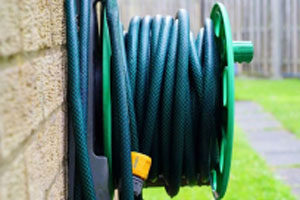
If you look at all elements of a hydraulic tubing unit, a tube is simply a rubber tube for some. But when selecting the components of the assembly, you have to concentrate on the substance from which the composite hoses are built, the tube fittings and the type of use the tube is made.
If you look at a full shaft assembly, it is merely a length of the shaft with a good fit at either end. A tube mounting is made of the tube and the end fittings defined by the application where the tube assembly is to be positioned.
Hose has three essential components, which would include:
The tube
The tube is the inner part of the composite hose and the line that comes into contact with any medium that is moved. Due to this contact, the material used to build the tube is essential. When the substrate’s chemical properties are not consistent with the chemical composition of the container, the structural stability of the whole container is affected.
The purpose of the tube, however, goes beyond the only one that pushes the fluid. The tube also protects the external layers of the tube. If the material going into the tube were to reach the other elements, an occurrence called permeation; the substance may be lost as well while the outer layers decayed.
The reinforcement
The middle layer of the shaft is the reinforcement layer; based on the implementation of the shaft; it varies in structure and design. The primary goal of this sheet is to improve or enhance the tube sheet. In most cases, the tube cannot withstand the fluid pressure as it passes. This centre layer gives the strength to support the tube together.
Three main reinforcement designs are available.
Helical
The helical reinforcement method is used in suction applications. The architecture of the helix stops the tube from breaking apart and blocking out any flow.
Spiral
The spiral strengthening is perfect for high-pressure applications. The alternating layers, typically of steel wire, build a solid barrier that can survive more violent forms.
Braid
A braided reinforcing coating is mainly used for small to relatively high pressures. It can be built in single or multiple layers, so it’s an adaptable layer design.
The cover
The cover is the last sheet of a hydraulic pipeline. The purpose of this layer is to protect the rest of the tube against external forces, the environment and to add extra safety levels. The cover layer is also built to withstand any condition in which the shaft works.
For example, if the tube is subjected to high temperatures, the cover layer will be measured to shield the inner layers against this harsh climate. This coating would also shield the inner layers from abrasion, or bending the tubing during use. The cover becomes the ultimate protection line for the pipeline if internal layers become breached, and a leak occurs.
Conclusion
Most bulk sleeves should be fitted to ensure correct operation. Tubes are generally made of solid materials, such as brass, stainless steel, metal or carbon steel. Furthermore, these connections have two parts – the socket that goes over the outside cover of the tube and the tree that goes directly into the inner tube of the tube. The trunk usually extends from the end of the tube and becomes the connecting end to which a piece of equipment is connected.


Leave a Reply